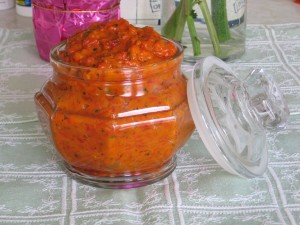How ironic that I wrote this piece on the same day as the National Day of Garlic, the feature food of my article.
Garlic, a relative in the onion family and native to central Asia, has been consumed by humans for more than 6,000 years. Known for its medicinal qualities, garlic has been used over the centuries for currency, to ward off evil spirits, as an aphrodisiac, and more. Most commonly it has been used as a seasoning that is a frequent flavor booster in world cuisines.
As a self-proclaimed “foodie,” I have been using garlic in savory dishes since I can remember learning to cook. But it wasn’t until a few years ago that I discovered that you could use more than the bulb of the garlic plant. Garlic “scapes” were introduced to me by my son, Andrew, who did an internship four years ago at a sustainable agriculture center in upstate New York.
The scape, or garlic curl, represents a stage of growth common to the hard-necked variety of garlic. As the underground bulb grows and begins to harden, the plant sends up a dense green shoot the consistency of asparagus that curls as it grows longer. Snipping off this curly shoot (the scape) at this stage, before it produces a flower, allows the garlic bulb to grow larger.
Garlic scapes are considered a vegetable and have a mild garlicky flavor. While my favorite way to use scapes is in the pesto recipe below, it can be used in hummus, sliced thin and sauteed, and even added raw to salads, and other vegetable dishes.
Garlic Scape Pesto
1 cup garlic scapes (8 or 9 scapes), chopped (remove flowering end)
1⁄3 cup walnuts
3⁄4cup olive oil
1⁄4to 1⁄2 cup grated Parmigiano-Reggiano cheese
1⁄2 teaspoon salt, or to taste
Ground black pepper
Mix all together in a food processor and blend to a fine consistency.
The pesto is delicious tossed with warm pasta or spread on as the bottom layer on a pizza before adding other toppings.
You can freeze the pesto or refrigerate it for up to one week.
Garlic scapes usually appear for a few weeks in late spring or early summer at local farmer’s markets. Doug and I planted our first crop of garlic last November and today the plants are several inches out of the ground. I will be watching for our own scapes and also at the markets again this summer so that we have a fresh batch of pesto in the freezer for use next winter.




